Final Assembly
Motherboard Assembly
-
Plug the
peel-motor-asminto the 2-pin connector on the PCB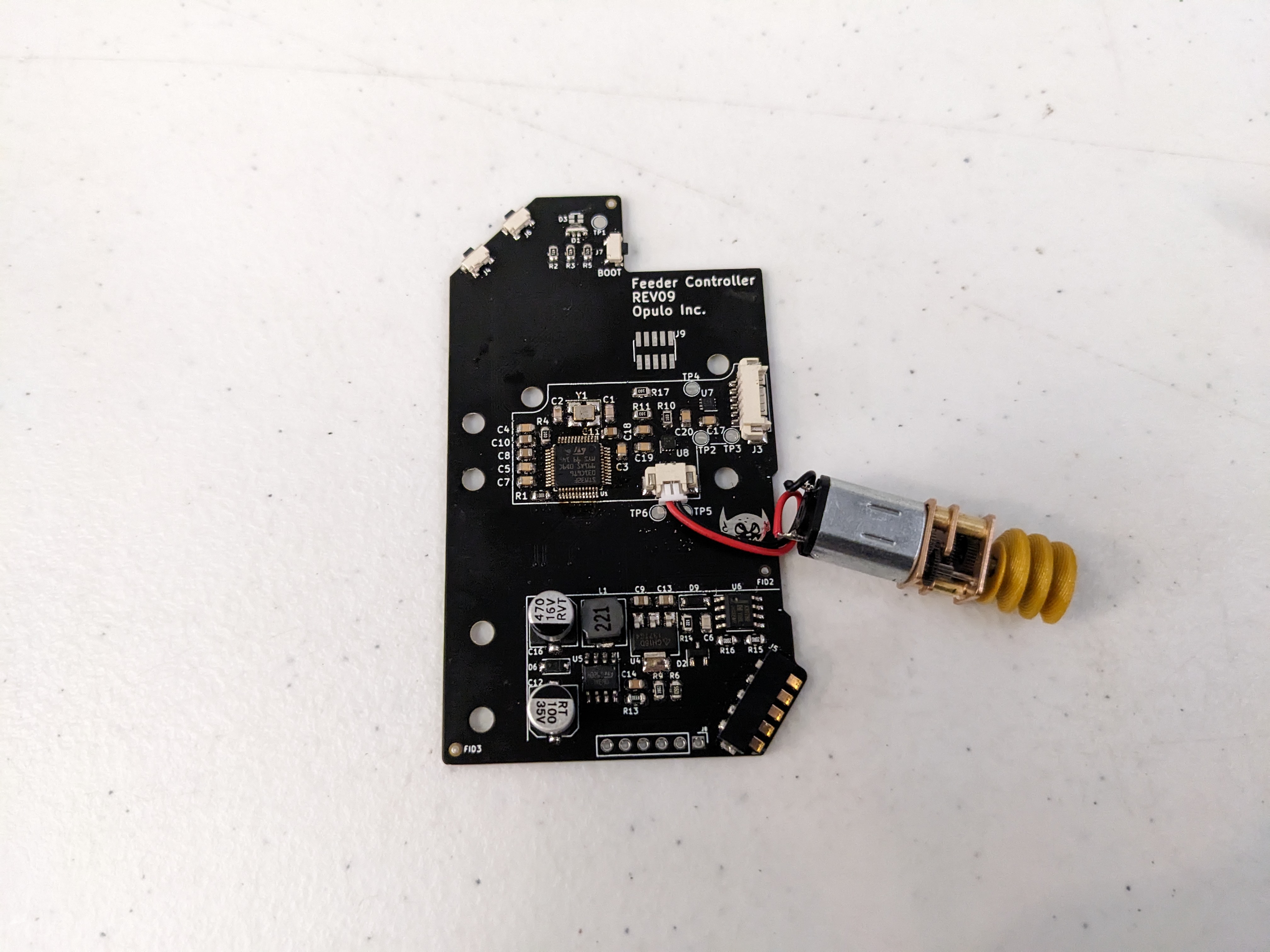
-
Slide the
peel-motor-asminto its corresponding cavity infeeder-frame-8mm- Tuck the excess cable into the empty region behind the
peel-motor-asm
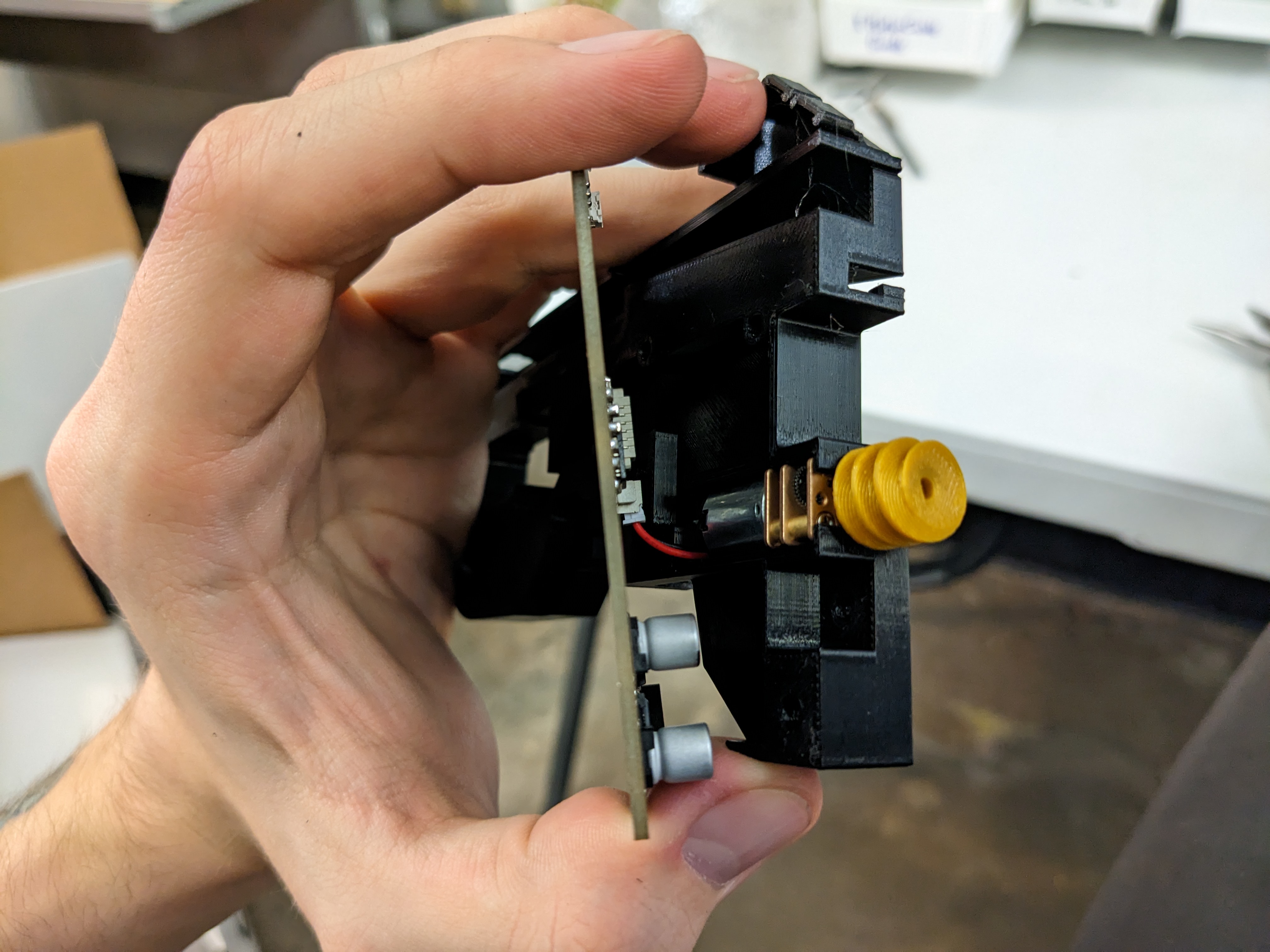
- Tuck the excess cable into the empty region behind the
-
Tilt the PCB slightly to insert the
drive-motorcable into the six-pin connector onfeeder-motherboard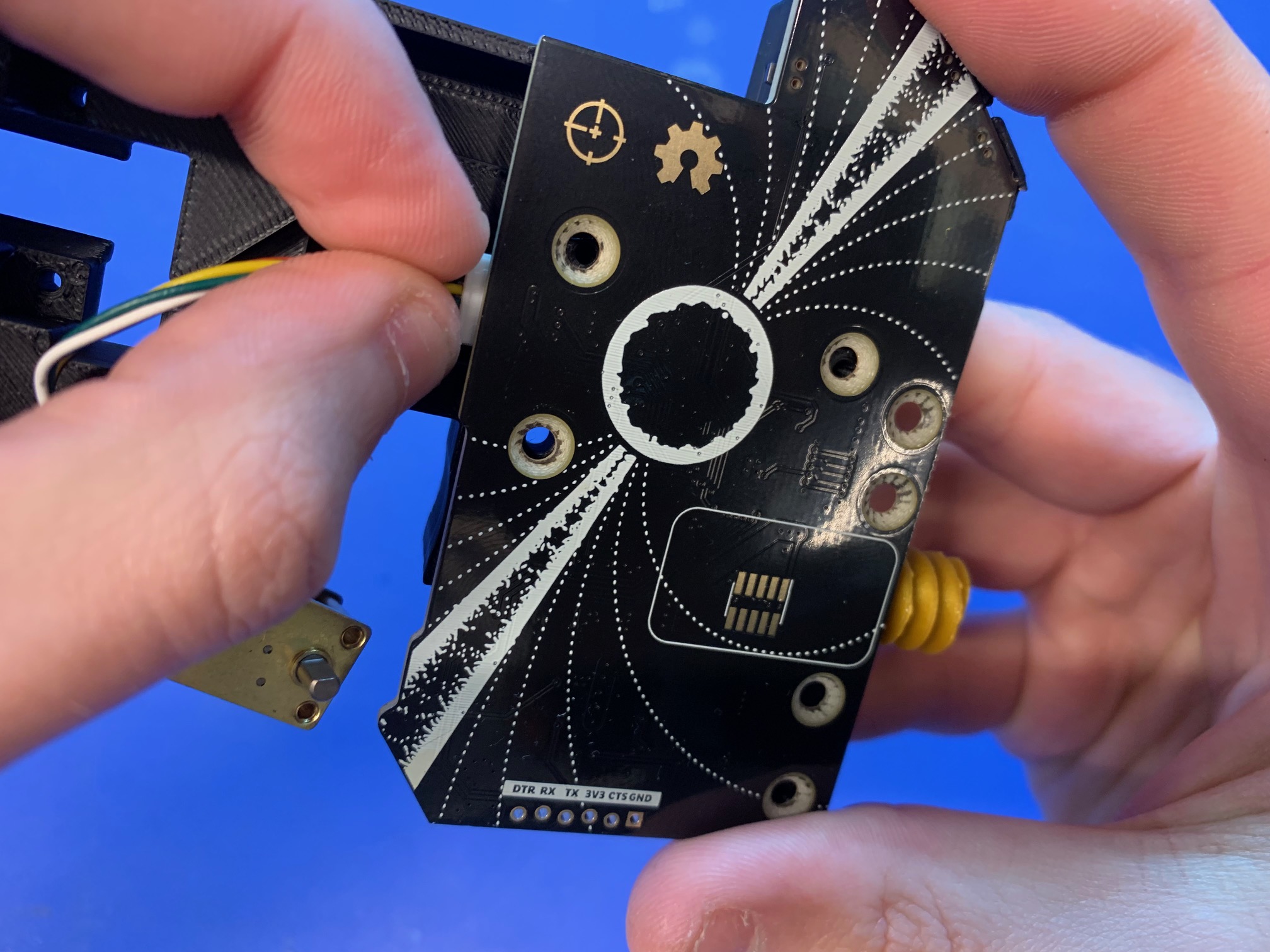
-
Press the PCB flat into
feeder-frame-8mm- Make sure the cable is not caught between them - it should lay flush

-
Press
drive-motorinto its cavity while ensuring it is flush with the back offeeder-frame-8mmand the cables are well routed, as shown

-
Insert 4x
M3x12mmflathead screws into the holes in the PCB as shown below- Use automatic screwdriver with power set to 4


QC Check - Test if the buttons on feeder-frame-8mm can easily actuate the switches on the PCB before proceeding
-
Install a
drive-motor-bracket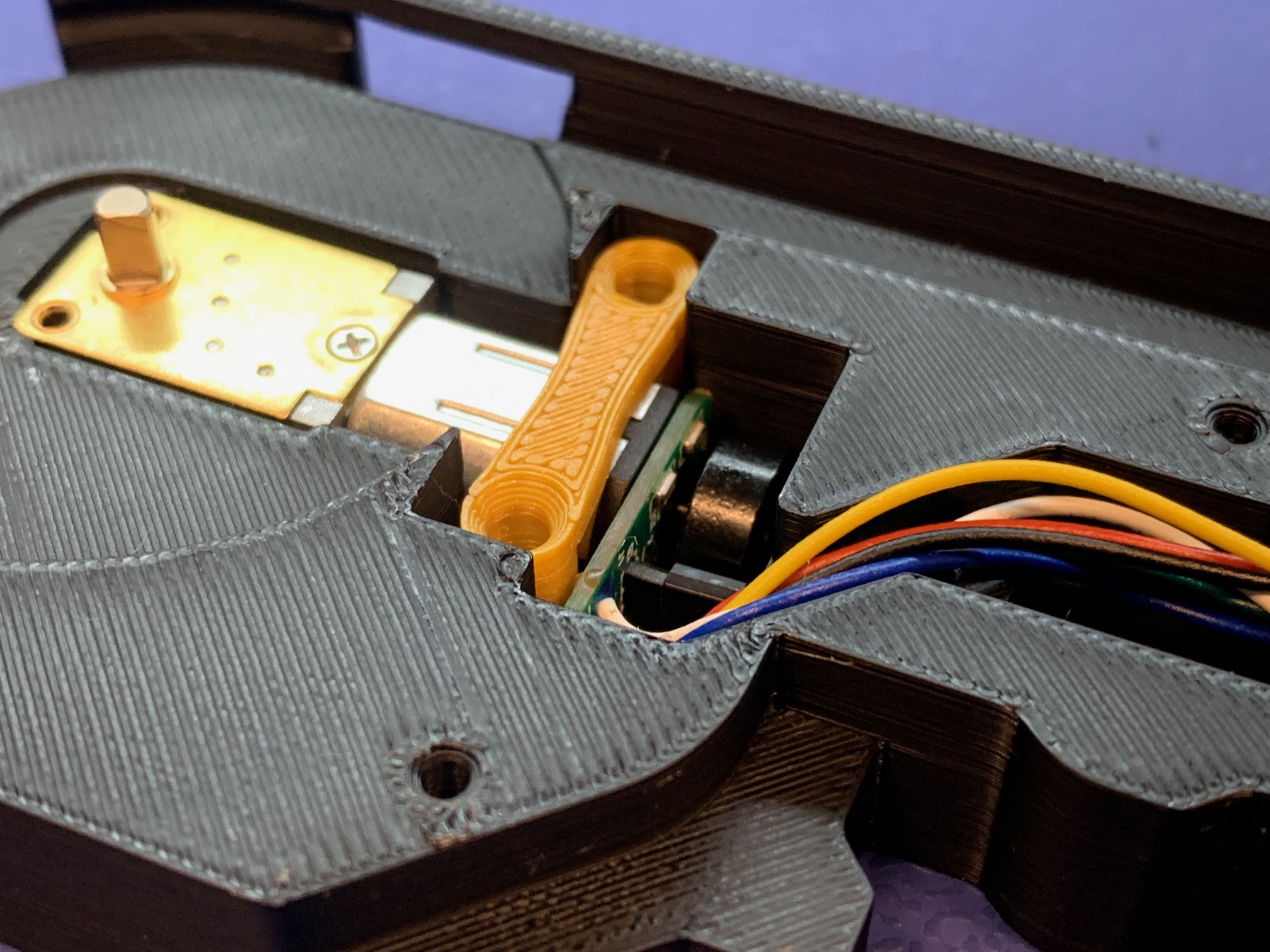
-
Insert 2x
M3x12mmflathead screws- Turn the screws in equal amounts before tightening them both to the final torque spec
- Tighten the 2x
M3x12mmflathead screws to55 cN.m (5.5 N.m)with a2mmhex head driver

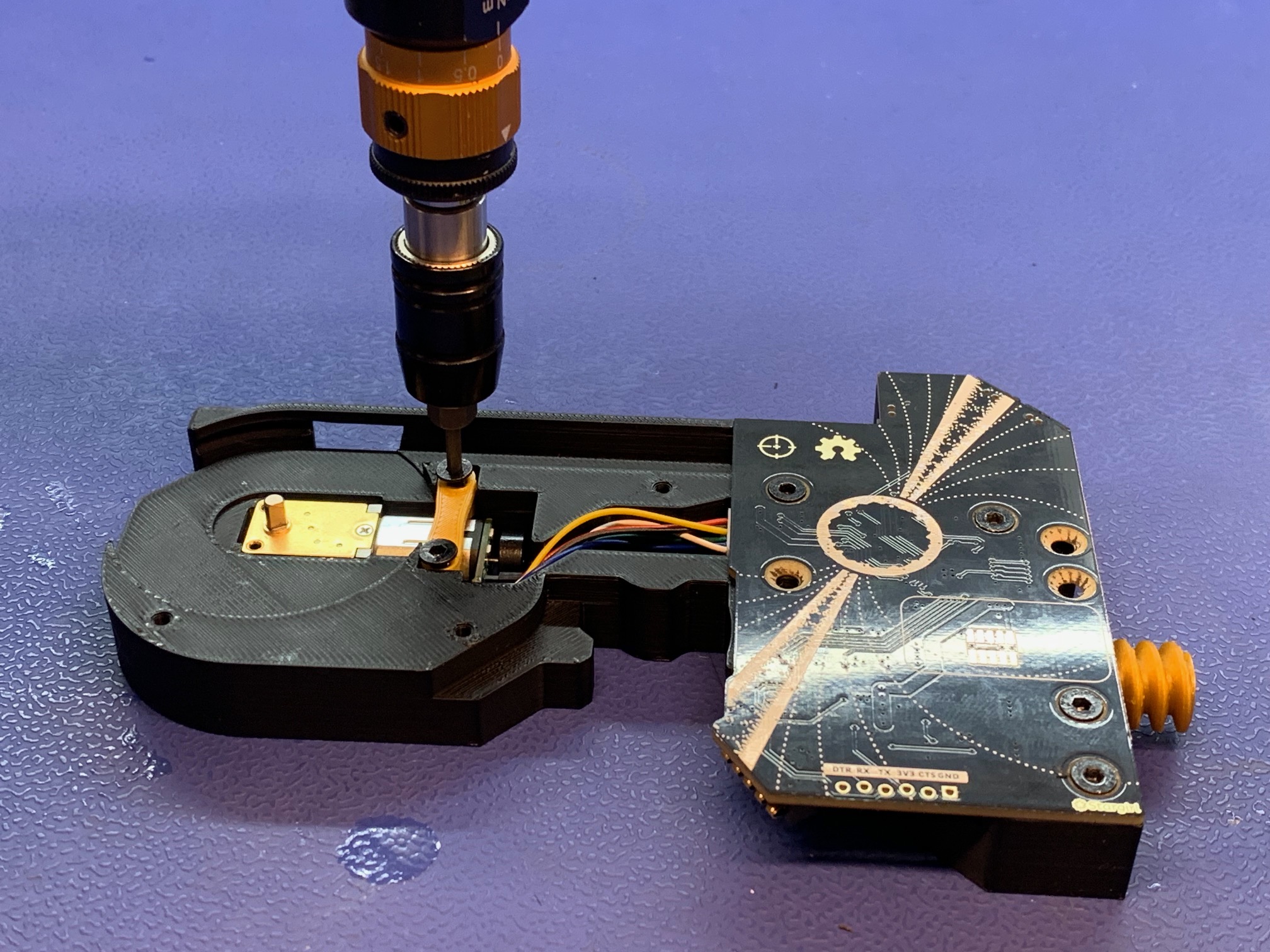
DO NOT OVER-TIGHTEN
Over-tightening can lead to bracket damage and motor skewing in the
feeder-frame-8mm -
Check that the
drive-motoris still flush and hasn't skewed because of tightening- If it appears crooked or not flush, loosen the screws and readjust the
drive-motor
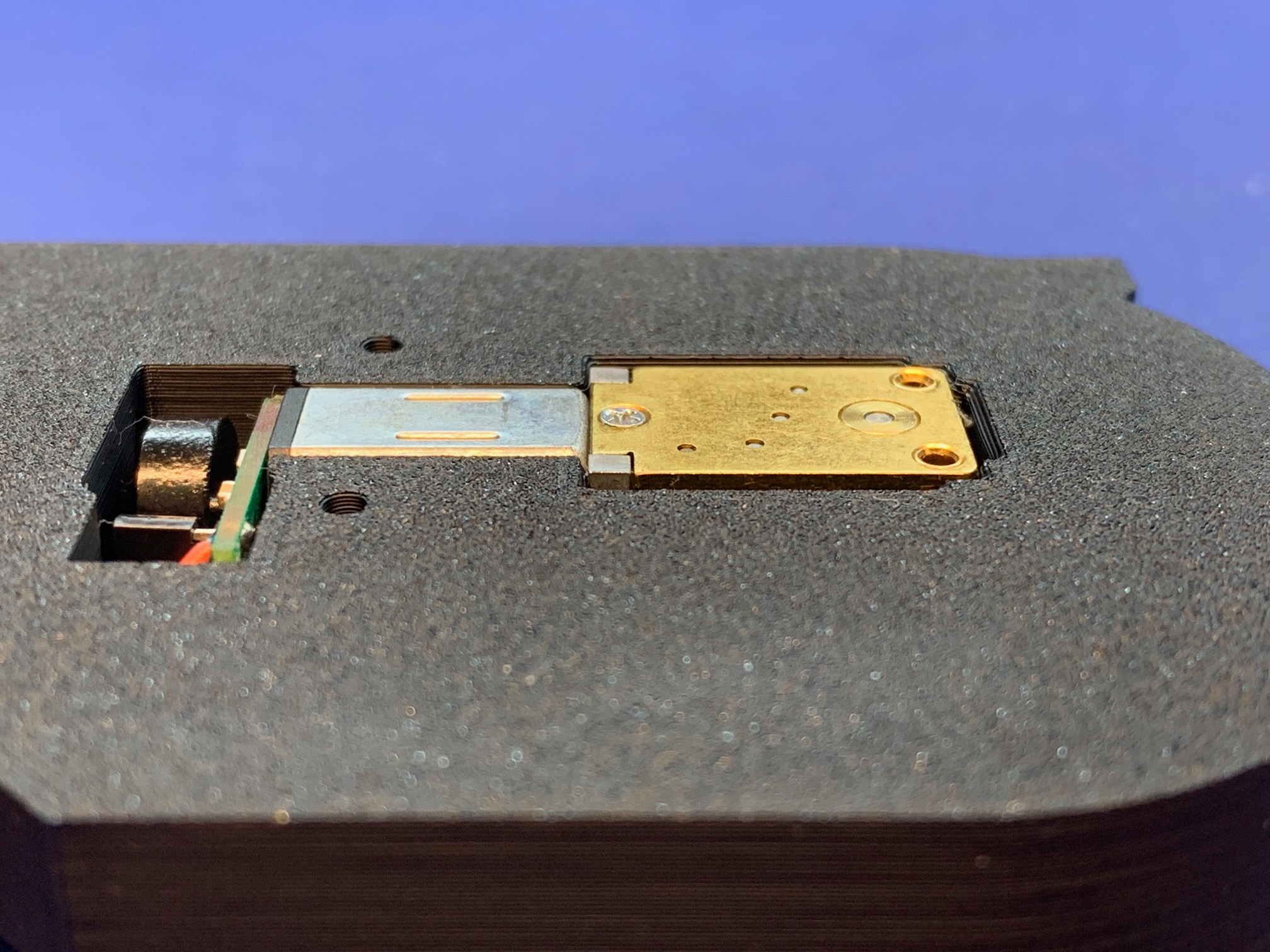
- If it appears crooked or not flush, loosen the screws and readjust the
-
Use a blade to clean up any loose plastic that was pushed through the
drive-motor-bracketmounting screw holes during installation
Failure to perform this step may cause issues with cosmetic sticker installation later on
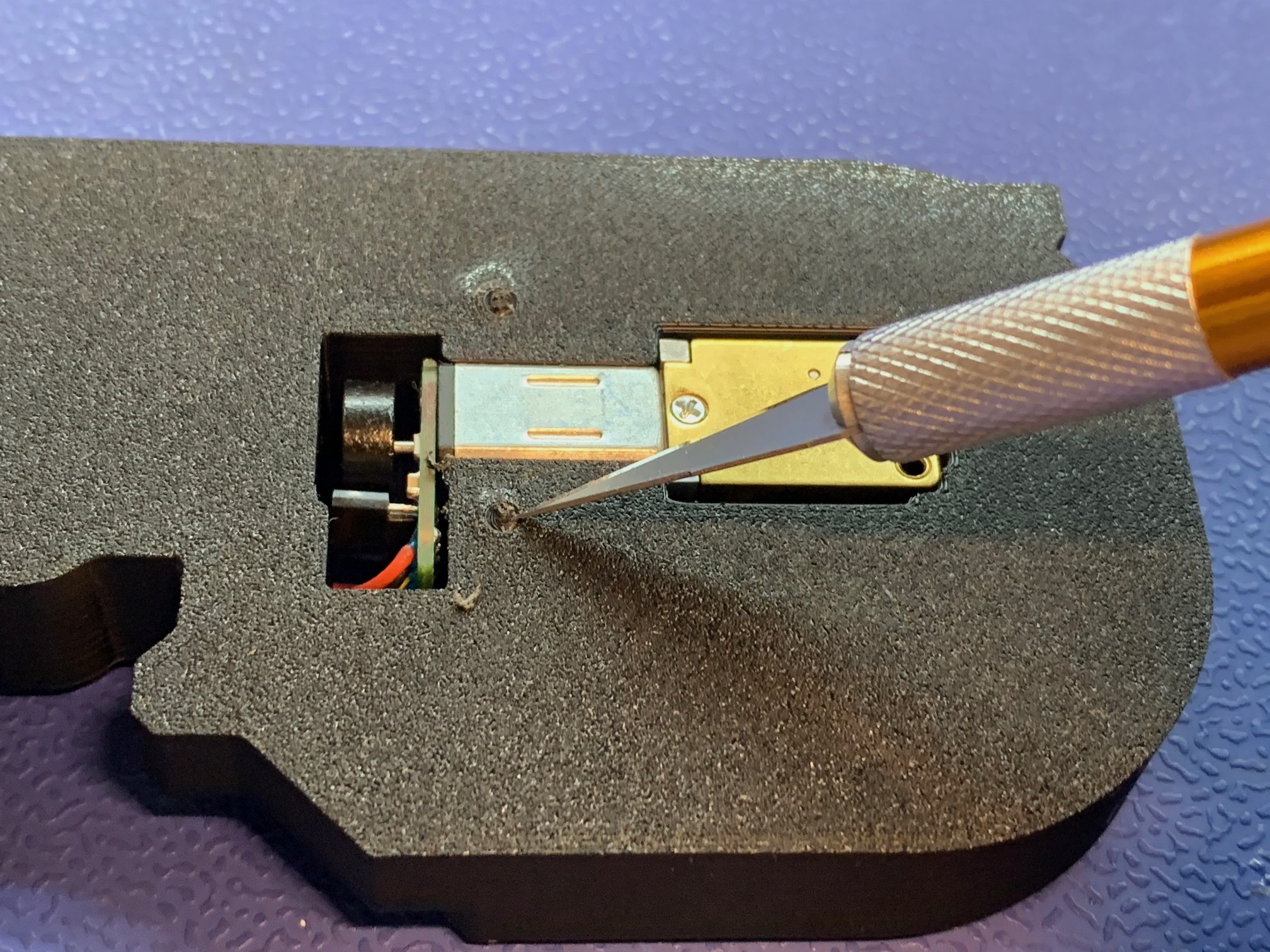
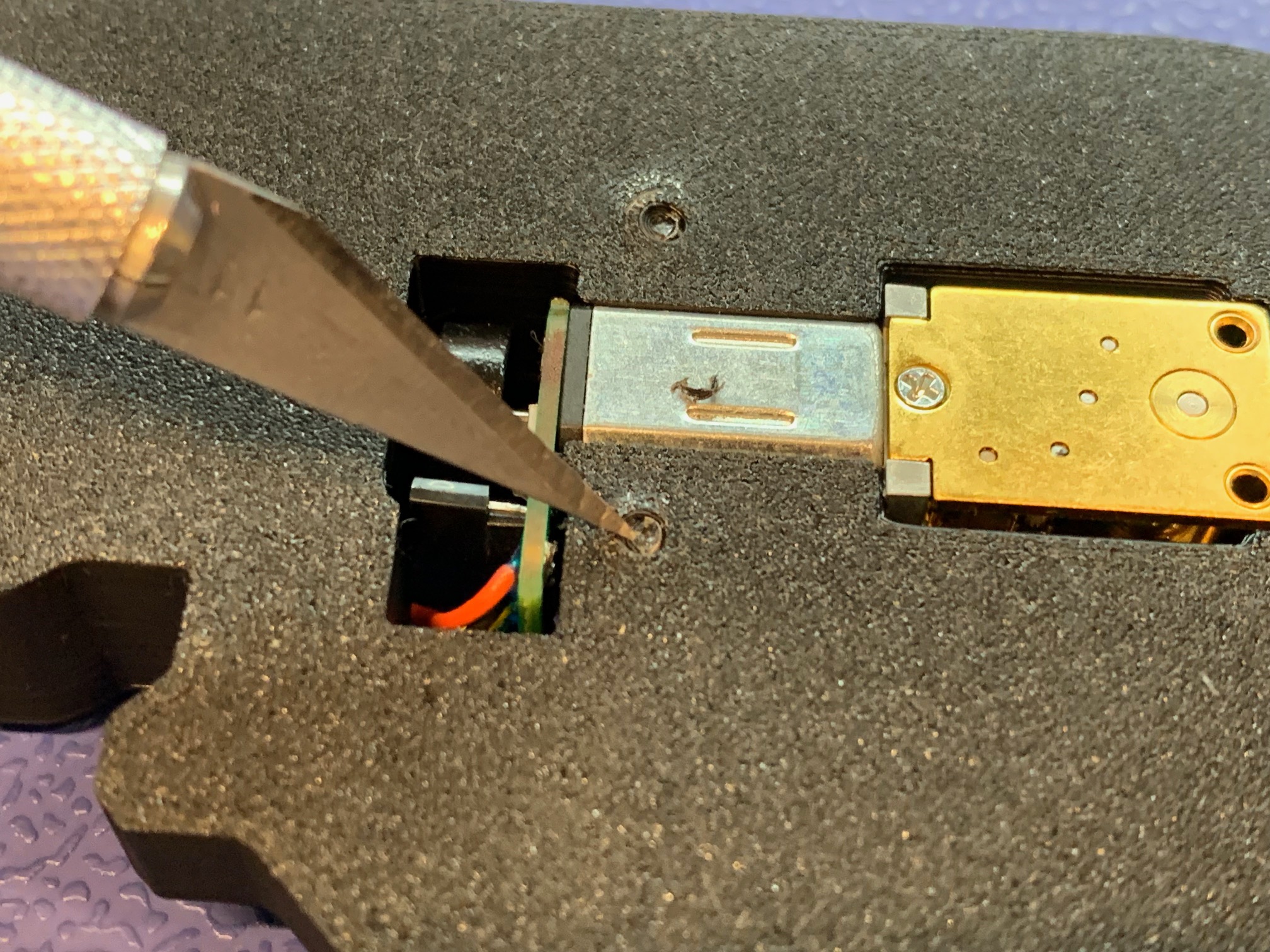
Install the release-lever
Wearing safety glasses is required while installing springs
-
Install the spring
- Grab a spring and a
release-lever, and hold the spring in therelease-leveras shown - Match the other end of the spring up with the circular cutout in the
feeder-frame-8mmprint - Finally, drop the
release-leverinto thefeeder-frame-8mm
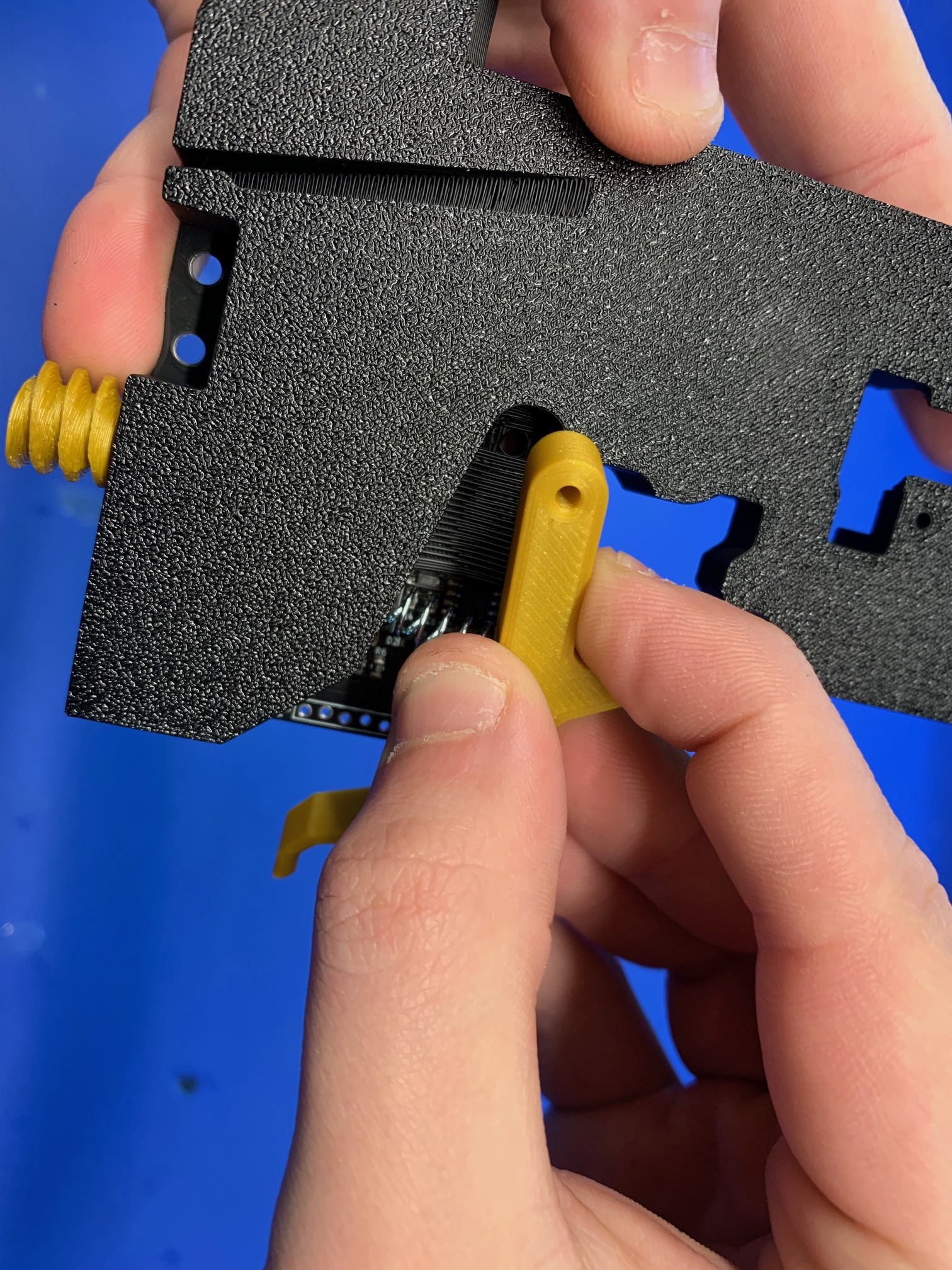
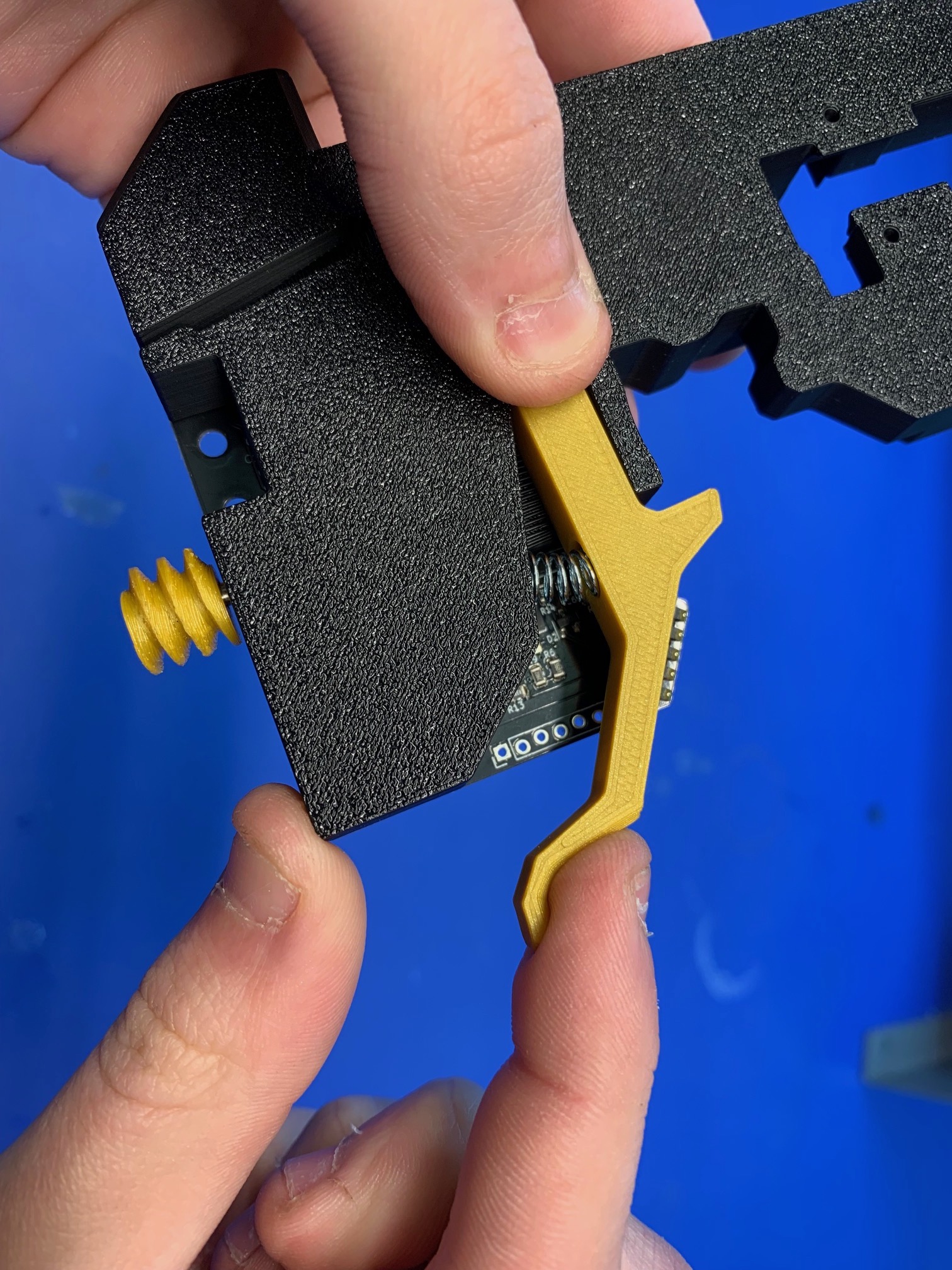
- Grab a spring and a
-
Insert an
M3x15mmflathead screw from the backside and drive it in using the automatic screwdriver on the 4 setting (0.25 N*m).- Make sure the arm can still swivel easily
- Make sure that the arm does not have any lateral movement

Install the peel-gear-box
-
Obtain
peel-gear-box
-
Place
peel-gear-boxin place, engaging with theworm-gearinpeel-motor-asm
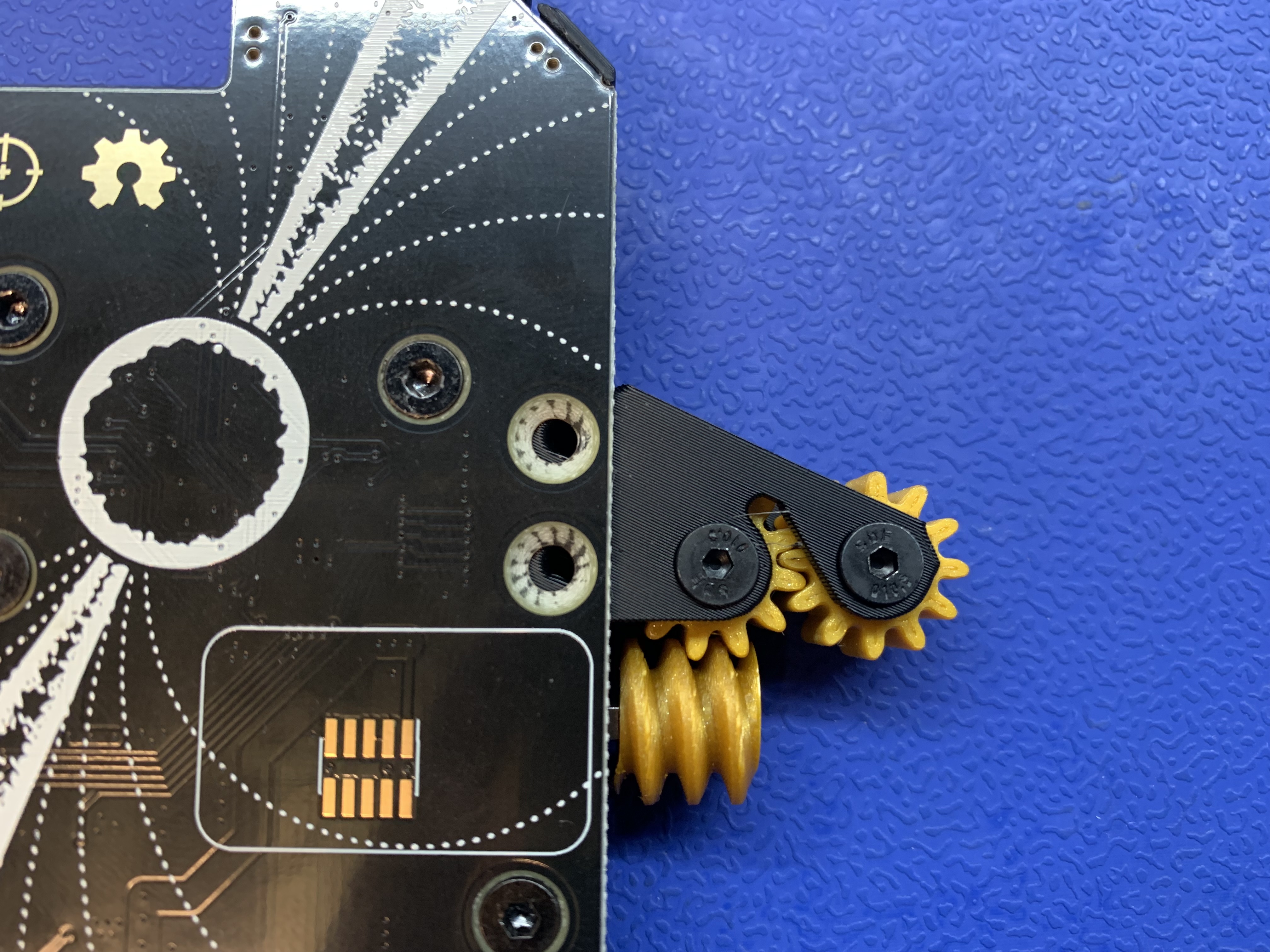
-
Insert 2x
M3x12mmflathead screws into the locations shown using automatic screwdriver set to 6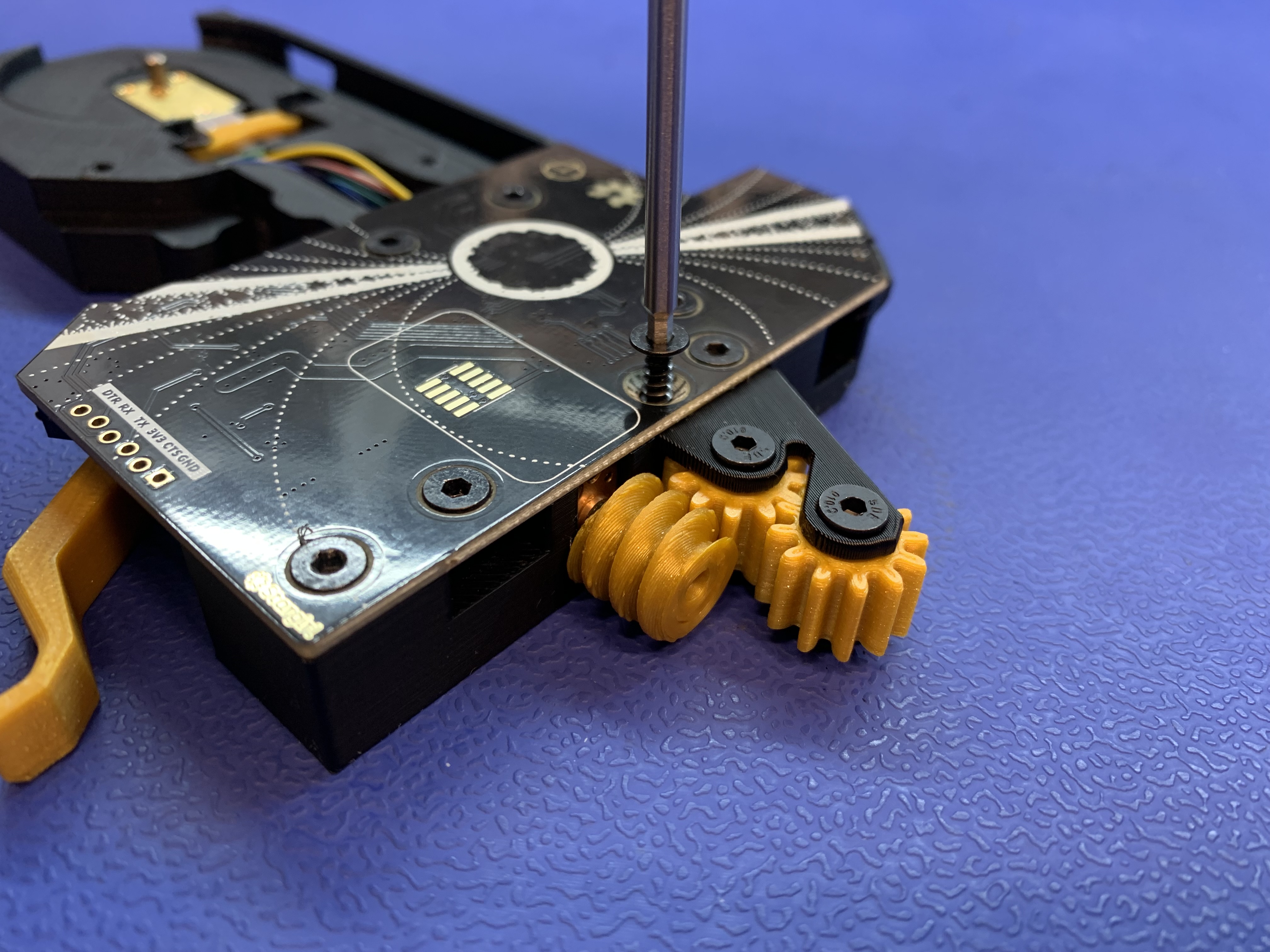
Install the drive-wheel-asm
Note on drive-motor shaft angle
Drive-motor units may come from factory with a shaft rotated at an angle that's not ideal for set-screw tightening. If this applies to the feeder you are handling, follow the steps below:
- Power up to the affected units by plugging it into Gundam
- Press the feeder's jog-forward button until the shaft is at an optimal angle for subsequent assembly work
-
Place the
Drive Wheel Shimsin thedrive-wheel-asmcavity as shown, with thedrive-motorshaft sticking through it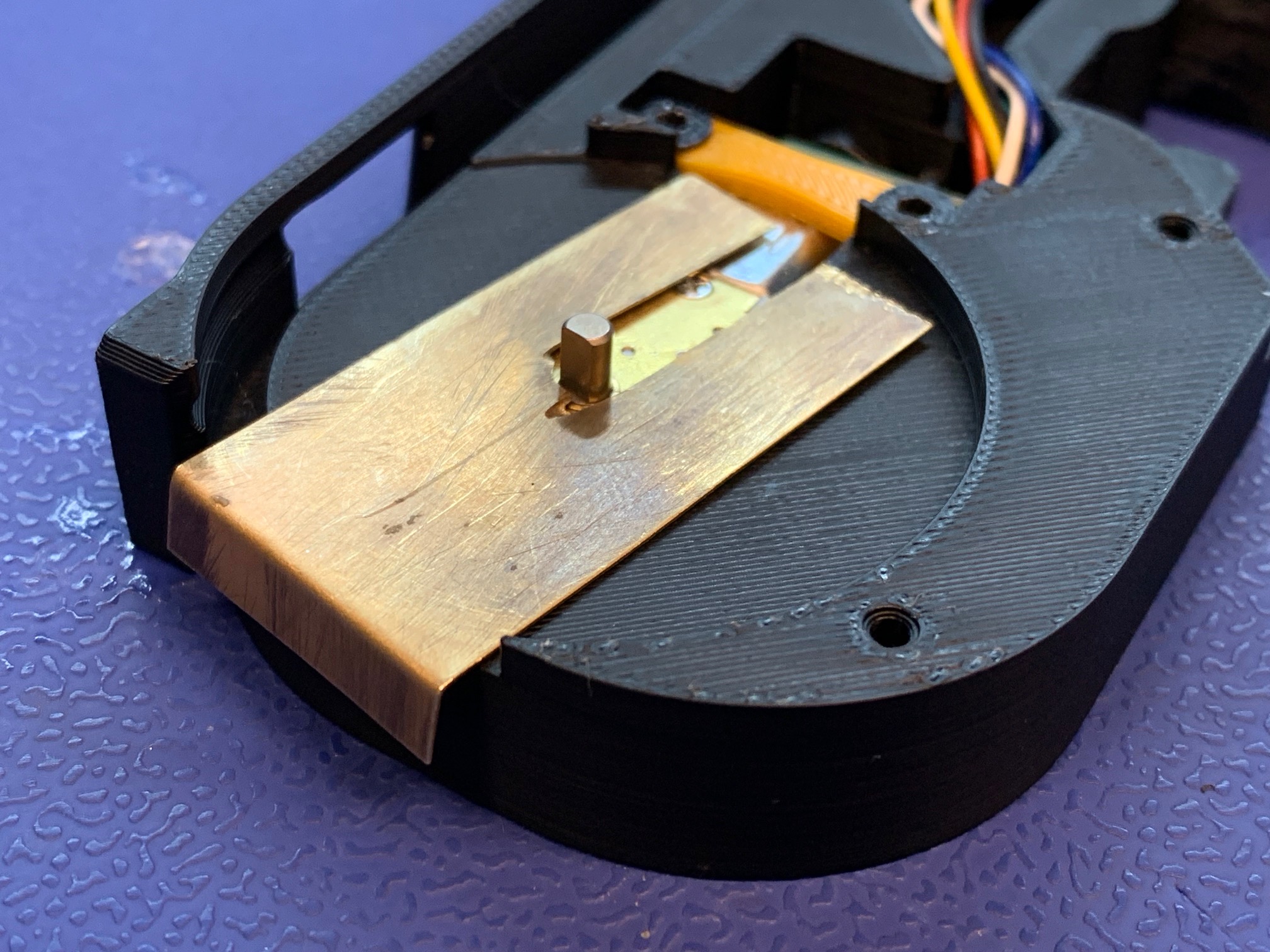
-
Drop the
drive-wheel-asmonto thedrive-motorshaft
-
With one hand, press down firmly on
drive-wheel-asmwhile using your free hand to tighten theshaft-collar-asmset-screw- Tighten the
M2.5x3mm-set-screwto30 cN.m (0.3 N.m)with a1.27mmor1.3mmhex head driver

- Tighten the
-
Remove the
Drive Wheel Shims
Install drive-motor-cover
-
Place a
drive-motor-coverover thedrive-wheel-asm- The
drive-motor-covershould lay flat with none of the cables preventing it from being flush againstfeeder-frame-8mm

- The
-
Insert 3x
M3x12mmflathead screws in the locations shown below- Use automatic screwdriver set to 6


You may now proceed to OQC